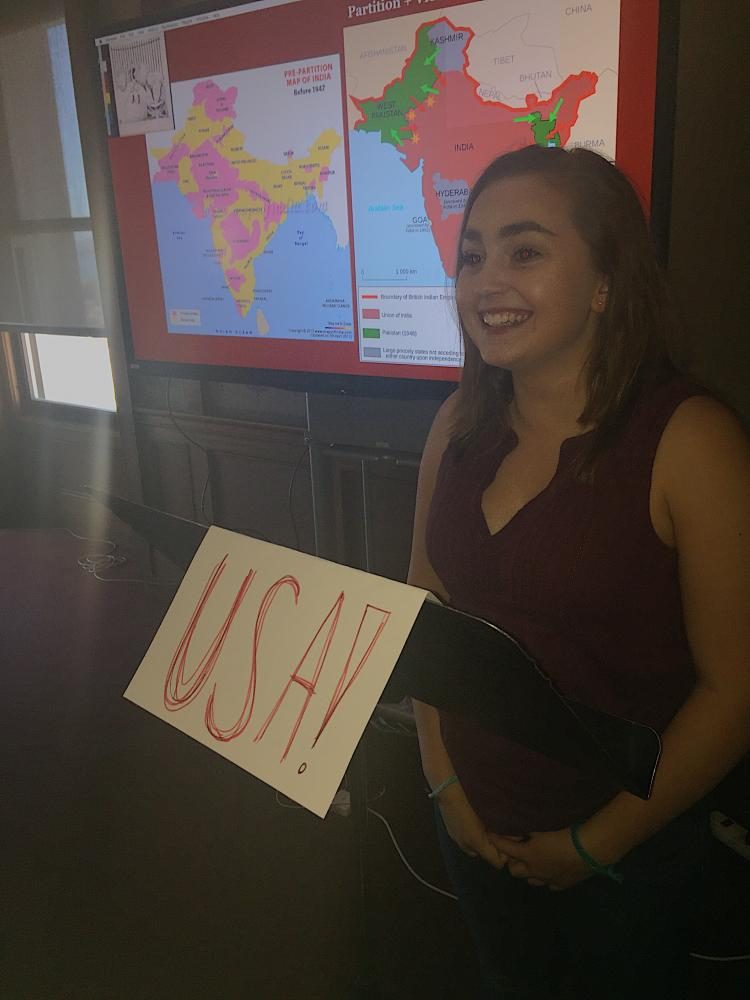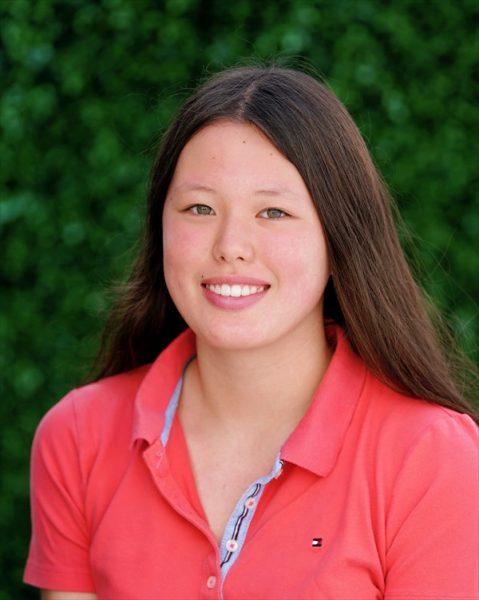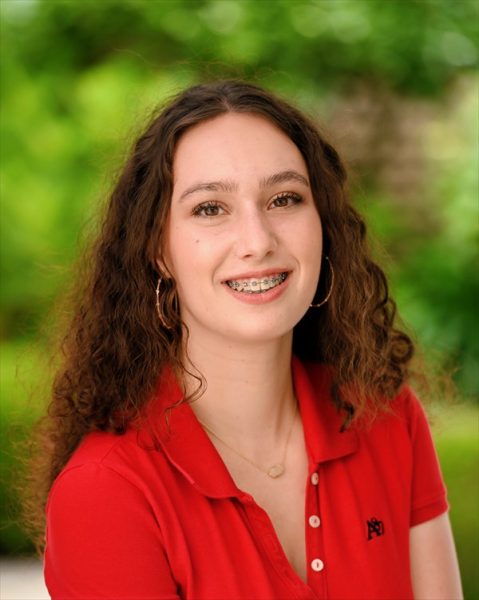Sophomores give speeches as Cold War figures
Sophomore Megan Mullins delivers a speech as President John Fitzgerald Kennedy for the United States. Mullins’ speech explained the reasoning behind the actions of the United States during the Cold War.
May 2, 2017
A history class project had sophomores giving speeches as prominent Cold War figures, which modeled the divergent perspectives held by the various countries who were affected by the era’s geopolitical tension.
The project had multiple components, which included researching a country during the Cold War, choosing a person in that country, writing a speech, and then presenting that speech.
“On the content side, the purpose of this project was to give folks an understanding of the variety of perspectives [during the Cold War],” history teacher Michael Stafford said. “We often are very aware of the perspective of the United States, because it is our country, but I wanted students to get an understanding of how other countries also got caught up in the Cold War between the United States and the Soviet Union.”
Sophomore Hannah Kelliher chose to be Argentinian citizen María Adela Gard de Antokoletz, whose son was abducted during the Cold War. In addition to learning about different countries and people, students were able to learn new skills, according to Kelliher.
“I think this project was beneficial because writing a speech is different than writing an essay — you have to learn how to put pauses in certain spots and emphasize specific phrases,” Kelliher said. “Speech writing was a useful skill I learned from this project.”
The Cold War project also allowed for students to learn from each other, and then improve because of that, according to Stafford.
“Students got to see people giving speeches who really just nailed it and they had energy and enthusiasm,” Stafford said. “They were then able to learn, from watching their peers in a low stakes environment.”










